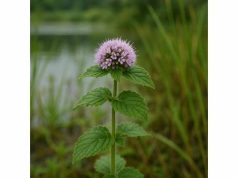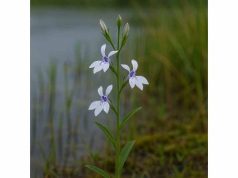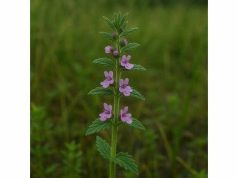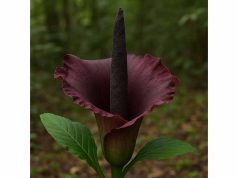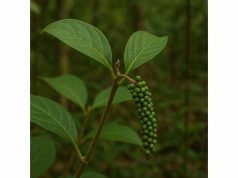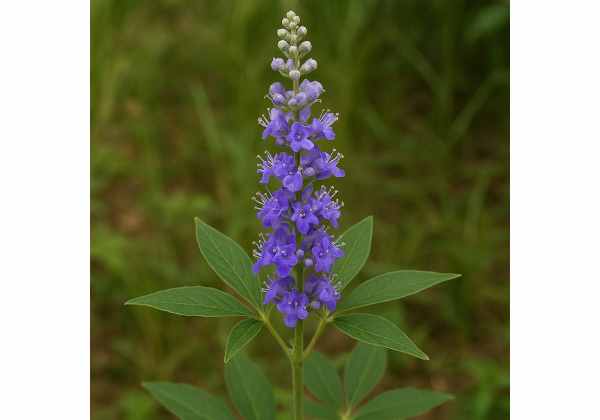
Vitex (Vitex agnus-castus), commonly known as chaste tree, has been revered for centuries as a natural ally in balancing hormones, easing menstrual discomfort, and supporting reproductive health. Packed with bioactive iridoid glycosides, flavonoids, and volatile oils, its berry extract exhibits dopaminergic activity, mild anti-inflammatory effects, and aromatherapeutic calming. Herbalists use Vitex to regulate menstrual cycles, alleviate premenstrual syndrome, and nurture mood stability. From tinctures and teas to capsules and topical preparations, this versatile herb offers a holistic approach to Vitex Uses, Vitex Benefits, and Vitex Properties. Whether you seek endocrine harmony, menopausal comfort, or emotional balance, Vitex’s rich phytochemical palette delivers gentle yet potent support.
Table of Contents
- Plant Characteristics and Ecological Niche
- Phytochemical Profile and Principal Constituents
- Health Advantages and Fundamental Qualities
- Therapeutic Applications and Safety Guidelines
- Research Insights and Landmark Discoveries
- Frequently Asked Questions
Plant Characteristics and Ecological Niche
Vitex agnus-castus, the chaste tree, is a deciduous shrub or small tree reaching 2–5 meters in height, prized for its decorative, palmate leaves and fragrant flower spikes. Native to Mediterranean climates, it flourishes in USDA zones 6–9, tolerating heat, drought, and poor soils while preferring full sun and well-drained substrates.
Key botanical features include:
- Leaves: Opposite, palmately compound with five to seven lanceolate leaflets, 5–8 cm long, emitting a mildly aromatic scent when crushed.
- Flowers: Dense, elongated clusters (racemes) of violet-blue, lavender, or white tubular blooms appearing in summer; each inflorescence spans 5–15 cm and exudes a sweet, honey-like fragrance that draws bees and butterflies.
- Fruit: Pepo-like drupes (so-called “berries”) ripen to glossy black in autumn; each contains several nutlets rich in bioactive compounds.
- Bark & Stems: Smooth and gray when young, becoming rough and fissured with maturity; stems bear short hairs that fade with age.
Ecologically, Vitex thrives along riverbanks, open woodlands, and rocky hillsides. Its deep taproot allows it to access subsurface moisture, making it resilient in drought conditions. Because of its tolerance for various stressors and rapid growth rate, Vitex is often planted as a windbreak, ornamental specimen, or component of ecological restoration sites. In areas where it naturalizes, it can form dense thickets; gardeners should monitor expansion to avoid invasiveness.
Cultivation tips for home herbalists and gardeners:
- Propagation: Easily grown from seeds (though slow to germinate) or softwood cuttings in late spring.
- Pruning: Lightly prune after flowering to maintain shape and encourage better bloom the following season.
- Soil pH: Prefers neutral to slightly alkaline conditions but tolerates pH from 6.0 to 8.0.
- Water Needs: Moderate—regular watering during establishment, then drought tolerant.
Beyond its ornamental and ecological roles, Vitex’s adaptability underscores its long-standing use in traditional medicine across Mediterranean, Middle Eastern, and South Asian cultures. Its presence in herb gardens and landscapes reflects not only its aesthetic appeal but also its powerful wellness footprint.
Phytochemical Profile and Principal Constituents
The therapeutic potency of Vitex stems from a diverse array of Vitex Active Compounds. Below is a breakdown of its principal phytochemicals:
- Iridoid Glycosides (Agnuside, Asperuloside, Rotundifuran)
- Action: Modulate dopamine receptors; influence pituitary function.
- Benefit: Helps regulate luteinizing hormone (LH) and prolactin levels—key to menstrual cycle balance.
- Flavonoids (Casticin, Apigenin, Luteolin)
- Properties: Antioxidant, anti-inflammatory, and mild spasmolytic.
- Effect: Eases uterine cramping, soothes digestive spasms, and combats oxidative stress.
- Volatile Oils (α-Pinene, Sabinene, β-Phellandrene)
- Function: Aromatherapeutic calming and mild antimicrobial.
- Use: May support mood stabilization and offer subtle antimicrobial activity in tinctures.
- Diterpenoids (Vitexilactone, Rotundifuran)
- Role: Contribute to dopaminergic activity, influencing neuroendocrine pathways.
- Insight: Key to Vitex’s ability to support healthy hormone profiles.
- Phenolic Acids (Chlorogenic Acid, Caffeic Acid)
- Action: Contribute to antioxidant defense and vascular health.
- Benefit: Supports circulatory system resilience and skin integrity.
- Fatty Acids & Sterols (Palmitic Acid, β-Sitosterol)
- Properties: Anti-inflammatory and cholesterol-modulating.
- Application: Complement cardiovascular support and systemic inflammation reduction.
- Tannins
- Role: Mild astringent properties, offering digestive support and topical skin benefits in compresses.
These compounds work synergistically to deliver the well-documented Vitex Medicinal Properties: hormone modulation, anti-inflammatory relief, antioxidant protection, and mood-enhancing effects. Standardized extracts typically guarantee 0.5–1.5% iridoid glycosides, ensuring consistent potency across Vitex Applications.
Health Advantages and Fundamental Qualities
Vitex’s multifaceted Medicinal Properties of Vitex translate into a broad spectrum of health benefits:
- Hormonal Balance & Menstrual Support
By modulating pituitary output—particularly reducing prolactin and normalizing LH—Vitex can help regularize irregular cycles, reduce symptoms of premenstrual syndrome (PMS), and support fertility. - Premenstrual Syndrome Relief
Clinical observations highlight reductions in breast tenderness, mood swings, irritability, and headaches when Vitex is used consistently over 3–6 months. - Menopausal Symptom Management
Vitex’s dopaminergic and estrogen-like actions can ease hot flashes, mood fluctuations, and sleep disturbances—offering a non-estrogenic option for peri- and postmenopausal women. - Acne & Skin Health
By addressing hormone-driven sebum production and offering anti-inflammatory flavonoids, Vitex shows promise in reducing adult acne and promoting clearer skin. - Mood Stabilization & Nervine Support
Aromatic volatile oils and flavonoids confer mild anxiolytic and calming effects, helping to soothe tension, promote restful sleep, and support emotional well-being. - Anti-Inflammatory & Analgesic Effects
Flavonoids and diterpenoids work together to dampen inflammatory pathways, providing relief for mild aches, arthritis discomfort, and digestive cramping. - Antioxidant Protection
Phenolic acids and flavonoids scavenge free radicals, supporting cardiovascular health and cellular longevity.
Imagine incorporating Vitex tincture into your daily routine: over a few cycles, you may notice more regular periods, fewer PMS irritations, and a newfound ease in handling everyday stressors—hallmarks of its natural hormone-regulating prowess.
Therapeutic Applications and Safety Guidelines
Harnessing Vitex effectively and safely requires attention to dosing, preparation, and potential interactions. Below are common Vitex Uses and precautions:
Common Preparations & Dosages
- Tincture: Standard ratio 1:5 (herb to 40–50% alcohol). Typical dose: 20–40 drops (≈1–2 mL) in water, once daily in the morning.
- Capsules/Tablets: 300–500 mg standardized extract (0.5–1.5% iridoids), once daily with food.
- Tea/Infusion: Less common for hormone support—steep 1–2 teaspoons dried berries in 250 mL hot water for 10–15 minutes; sip up to twice daily for mild calming.
Duration & Onset of Action
- Timeframe: Hormonal modulation requires consistent use over 3–6 menstrual cycles to observe full benefits.
- Monitoring: Keep a symptom diary to track changes in cycle regularity, mood, and physical comfort.
Potential Interactions & Contraindications
- Dopaminergic Medications: May interact with antipsychotics or Parkinson’s drugs that rely on dopamine modulation.
- Hormonal Therapies: Use cautiously alongside contraceptives or hormone replacement therapy; consult a healthcare professional.
- Pregnancy & Breastfeeding: Generally not recommended—avoid during pregnancy and lactation due to hormonal effects.
- Allergies & Sensitivities: Rare, but perform patch test for topical use; monitor for gastrointestinal upset if sensitive.
Safety Tips
- Standardization: Choose extracts standardized to iridoid glycoside content for reliable potency.
- Timing: Take in the morning to align with natural hormone cycles and avoid potential sleep disturbances.
- Quality: Source from reputable suppliers to minimize pesticide residue and ensure plant authenticity.
By respecting proper dosing, preparation methods, and professional guidance, you can tap into Healing Properties of Vitex while minimizing risks—making it a valuable cornerstone of women’s wellness protocols.
Research Insights and Landmark Discoveries
A growing body of scientific work substantiates Vitex’s traditional uses. Highlighted studies include:
- 1995 – “Vitex agnus-castus in the Treatment of Premenstrual Syndrome”
- Journal: Phytomedicine
- Key Findings: Double‑blind trial showed significant reduction in PMS symptoms—particularly mastalgia, irritability, and edema—after three menstrual cycles.
- 2000 – “Mechanism of Action: Dopaminergic Effects of Vitex Extract”
- Journal: Planta Medica
- Insight: Demonstrated that agnuside and other iridoids bind dopamine D2 receptors, reducing prolactin secretion in vitro.
- 2005 – “Clinical Efficacy in Menopausal Symptom Relief”
- Journal: Journal of Reproductive Medicine
- Results: Reported decreased frequency and severity of hot flashes and mood disturbances in peri‑menopausal women after 8 weeks of standardized extract.
- 2010 – “Vitex agnus-castus and Acne Vulgaris”
- Journal: Journal of Cosmetic Dermatology
- Conclusion: Supplementation led to marked improvement in hormone‑related acne lesions over a 12‑week period.
- 2018 – “Systematic Review of Vitex for Menstrual Disorders”
- Journal: Journal of Herbal Pharmacotherapy
- Highlights: Aggregated data from 15 studies confirmed cycle‑regulating and PMS‑alleviating effects with minimal adverse events.
- 2022 – “Comparative Analysis of Flavonoid Profiles in Vitex Cultivars”
- Journal: Phytochemistry Letters
- Findings: Identified cultivar variations in casticin and luteolin content, suggesting optimized selection for specific therapeutic targets.
These investigations validate centuries of herbal wisdom, clarifying Medicinal Uses of Vitex and guiding modern applications. As research continues, emerging insights promise more targeted, effective uses of this botanical gem.
Frequently Asked Questions
How long does it take for Vitex to work for PMS?
Vitex typically requires 3–6 menstrual cycles of consistent dosing before full PMS relief is observed. Maintain a symptom journal to track improvements over time.
Can men use Vitex supplements?
While predominantly studied for women’s health, men may use Vitex for mild hormonal balancing or mood support; consult a healthcare practitioner before use.
Is Vitex safe during pregnancy?
No—avoid Vitex during pregnancy and breastfeeding due to its hormone‑modulating effects. Resume use only under professional guidance postpartum if desired.
What is the best form of Vitex extract?
Standardized extracts (capsules or tinctures) guaranteeing 0.5–1.5% iridoid glycosides offer consistent potency and ease of dosing compared to teas.
Can Vitex help with acne?
Yes—by modulating hormone levels and reducing androgenic activity, Vitex may decrease sebum production and improve hormone‑related acne over 8–12 weeks.
Are there any side effects of Vitex?
Side effects are rare but may include mild gastrointestinal upset, headaches, or skin reactions. Always start with lower doses and monitor tolerance.
Disclaimer: The information in this article is for educational purposes only and should not replace professional medical advice.
If you found this guide to Vitex insightful, please share it on Facebook, X (formerly Twitter), or your favorite platform—and follow us for more herbal wisdom!

